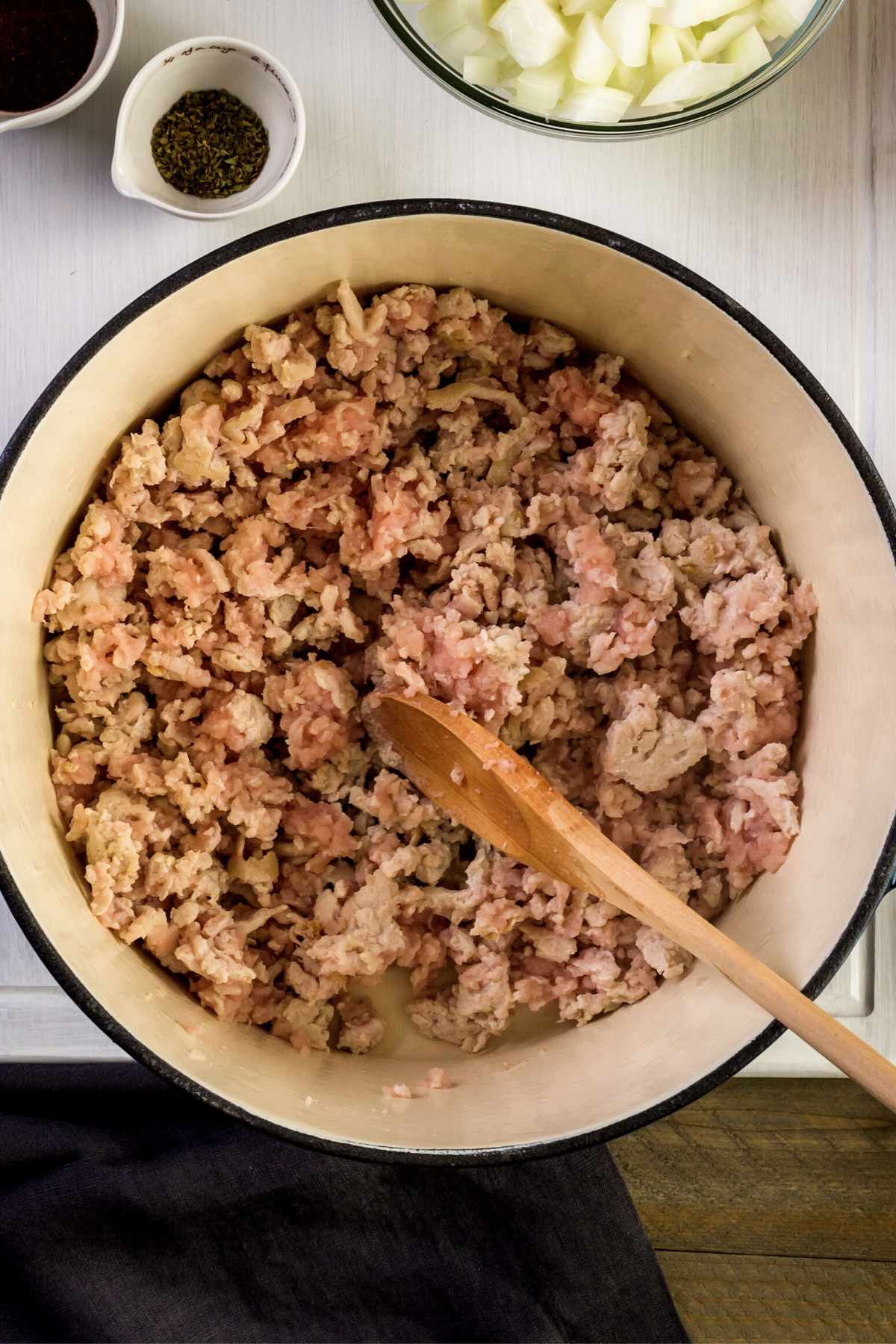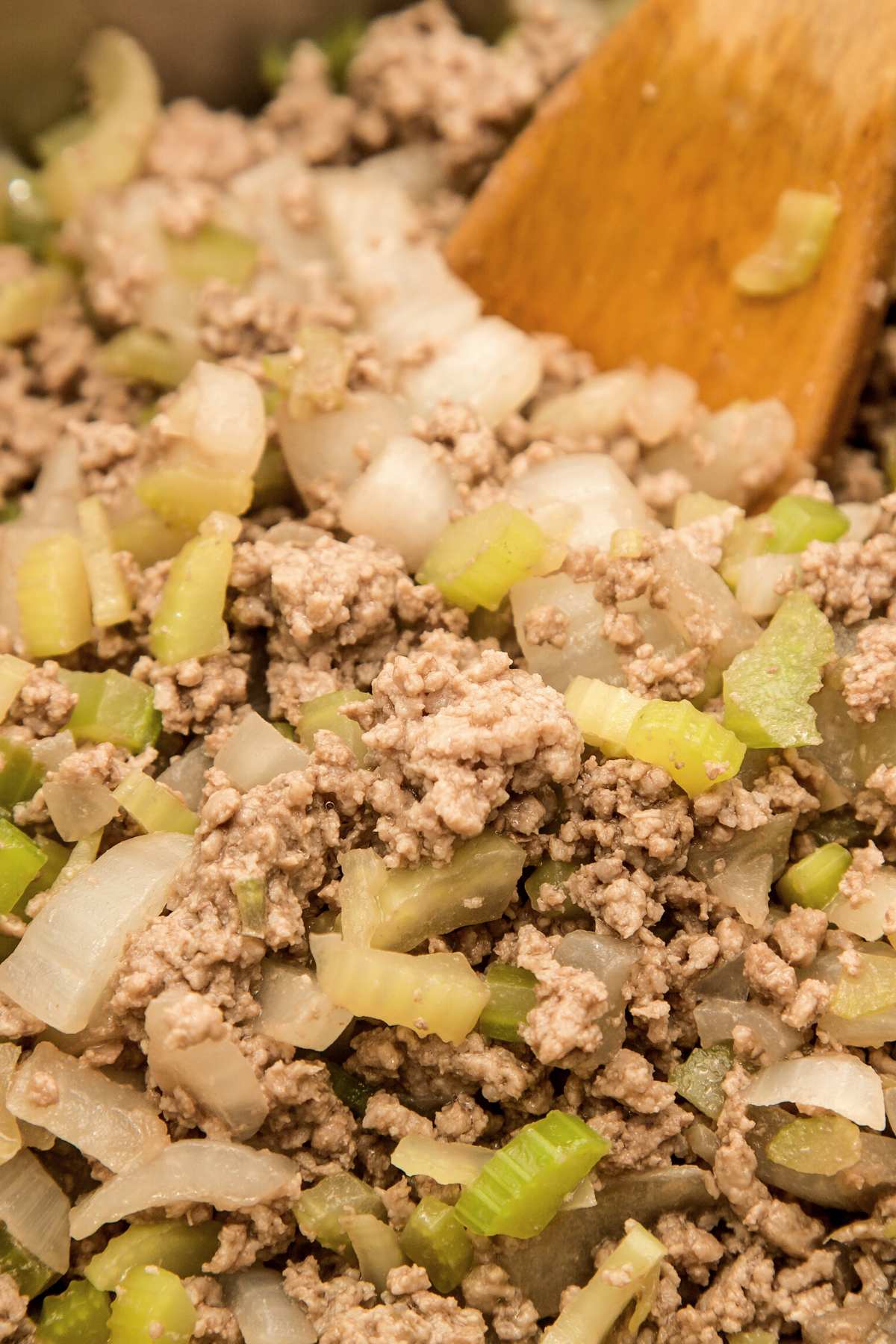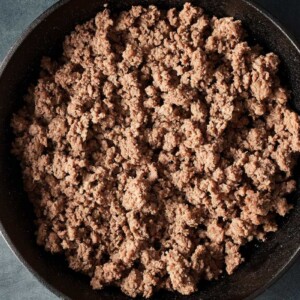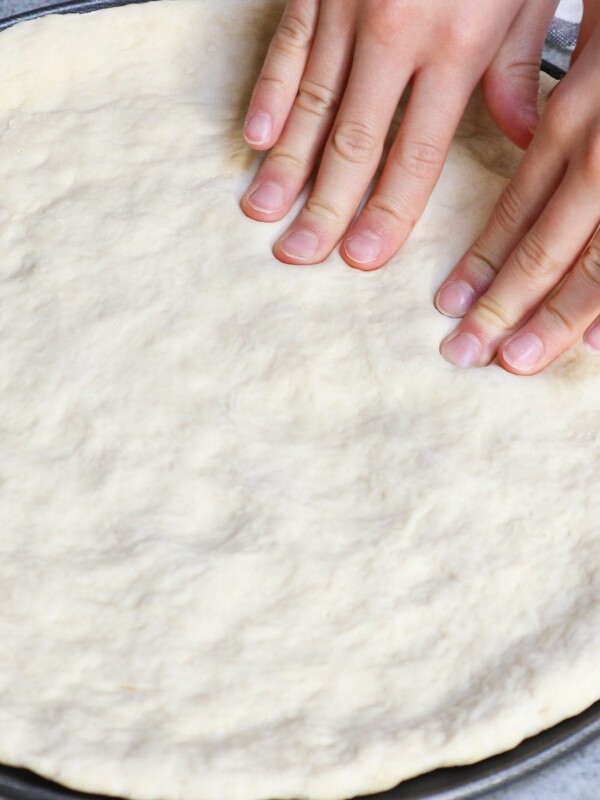Ground Turkey Internal Temp (Best Internal Temp for Ground Turkey)
on May 30, 2023, Updated Nov 21, 2023
This post may contain affiliate links. Please read my disclosure policy.
When you’re cooking ground turkey at home, the internal temp is the best way to know when it’s ready to eat. Keep reading to learn everything you need to know about measuring ground turkey internal temp.

There are so many delicious ways to use ground turkey. From meatballs and burger patties to casseroles and pasta dishes, ground turkey is a healthy and low fat protein.
Raw turkey meat, like other types of poultry, is susceptible to harmful bacteria like salmonella. To enjoy turkey safely, it’s important to pay attention to the internal temperature. This is the best way to determine when the meat can be removed from the heat source. Keep reading to learn the best internal temp for ground turkey.
Ground Turkey Internal Temp
The USDA recommends that turkey, chicken and other types of poultry be cooked to an internal temp of 165°F or 74°C. This is true for whole birds, cuts of turkey and ground turkey.
If you’re cooking ground turkey at high temperatures on the stovetop, you’ll likely exceed the 165°F internal temp suggested by the USDA. Luckily, ground turkey is flavorful and juicy even when cooked to a higher internal temp like 170°F or 175°F. When cooked to these higher temperatures, you’ll get even more flavor from the crispy browning on the skillet.
How to Measure the Internal Temp for Ground Turkey
Let’s say you’re cooking a dish like chili con carne or a saucy pasta recipe. It would be impractical to measure the internal temp of the pieces of ground turkey that have been distributed throughout the dish. With dishes like these, you can trust that the meat is thoroughly cooked based on the cooking time instructed in the recipe.
Undercooking and overcooking are more likely to happen with meatier ground turkey recipes like meatballs or burger patties. Measuring the internal temp is the best way to get perfectly cooked results every time.
Other Ways to Know Ground Turkey Meat Is Cooked
In a pinch, you can use visual cues to determine when ground turkey meat is safe to eat. While raw ground turkey has a reddish pink appearance, it becomes a pale, opaque white color when fully cooked.
If you don’t have a thermometer on hand, this option may be your best bet.

Tips For Cooking Ground Turkey
- Always use the freshest possible ground turkey. For best results, choose turkey that was ground on the day of purchase. For even better results, visit a butcher and have them grind it in front of you.
- Be generous with seasonings, spices and salt. In addition to bringing out the flavors in the meat, salt helps with tenderizing and keeping things nice and juicy.
- If you need to use your hands (for example when rolling meatballs or shaping patties), don’t overwork the meat. This can cause the meat to become tough and chewy. Gentle hands produce the best results.
How Long Does Ground Turkey Take To Cook?
Many factors can influence the cooking time for ground turkey. A few spoonfuls in a stir fry or a bowl of pasta will cook much faster than a meatier dish. Generally speaking, you can expect a cooking time of 10 to 20 minutes for meatballs and patties. A turkey meatloaf or casserole should take 30-60 minutes in the oven.
Unlike pork and beef, there’s no need to ‘rest’ ground turkey after removing it from the heat source. Resting is necessary for cuts of muscle meat, but isn’t necessary for ground meat. As long as ground turkey has reached an internal temp of 165°F, you can remove it from the heat source and start eating.
How To Tell When Ground Turkey Is Bad
Even the best cooking technique won’t compensate for bad ingredients. There are several ways to know if ground turkey has gone bad. If there’s ever any doubt, pay attention to the signs:
- Color: Freshly ground turkey has a reddish pink color. Spoiled ground turkey often appears brown or gray.
- Smell: A sour or pungent odor is a definite sign that the ground turkey should be thrown away
- Texture: Discard ground turkey that has a sticky or slimy texture
By visiting a trusted butcher, you can be sure you’re getting the freshest, highest quality ground turkey. If you’re purchasing from the grocery store, pay attention to the date of packaging and the expiry date.

FAQs
Is Ground Turkey Done at 165 or 180?
Once ground turkey has reached an internal temp of 165°F, it’s ready to be removed from the heat source. If you like your turkey with the crispy brown bits, you can cook it for a bit longer, up to 180°F.
Does Ground Turkey Need To Be Fully Cooked?
Ground turkey must be fully cooked before consumption. Like other types of poultry, raw poultry carries bacteria like salmonella, which can cause food poisoning or more serious health issues.
Is It Okay If Ground Turkey Is A Little Pink?
Regardless of color, the internal temp is the best way to determine doneness. As long as the thermometer has a reading of 165°F, it’s alright if the meat is a little pink.
What Happens If You Eat Slightly Undercooked Turkey?
Even slightly undercooked turkey has a risk of carrying harmful bacteria. Always ensure ground turkey is fully cooked before consumption.
Does Ground Turkey Brown When Cooked
Ground turkey typically turns a light brown or white color when fully cooked. However, to be 100% sure, it’s always best to use a meat thermometer. For burger patties and meatballs, there’s no way to be certain that the center is fully cooked unless you use a thermometer with a probe.
Is Ground Turkey Supposed To Be White When Cooked?
Ground turkey usually turns white when it’s fully cooked. However, it’s possible for fully cooked ground turkey to have a slightly pink appearance. The internal temp is the best way to know for sure.
Can You Overcook Ground Turkey?
Turkey is one of the leanest proteins you can eat. This means it’s quite prone to becoming dry and flavorless due to overcooking.

Ground Turkey Internal Temp Measurement
Ingredients
- ground turkey
- instant-read thermometer
Instructions
- Follow the recipe instructions to cook the ground turkey
- After 80% of the cooking time has passed, measure the temperature using the probe of an instant-read thermometer. If the temperature is below 165°F, keep cooking. Check again in a few minutes.
- When the thermometer indicates an internal temp of 165°F, the turkey is ready for you to enjoy.
Nutrition information provided is an estimate only and will vary based on ingredient brands and cooking methods used.



